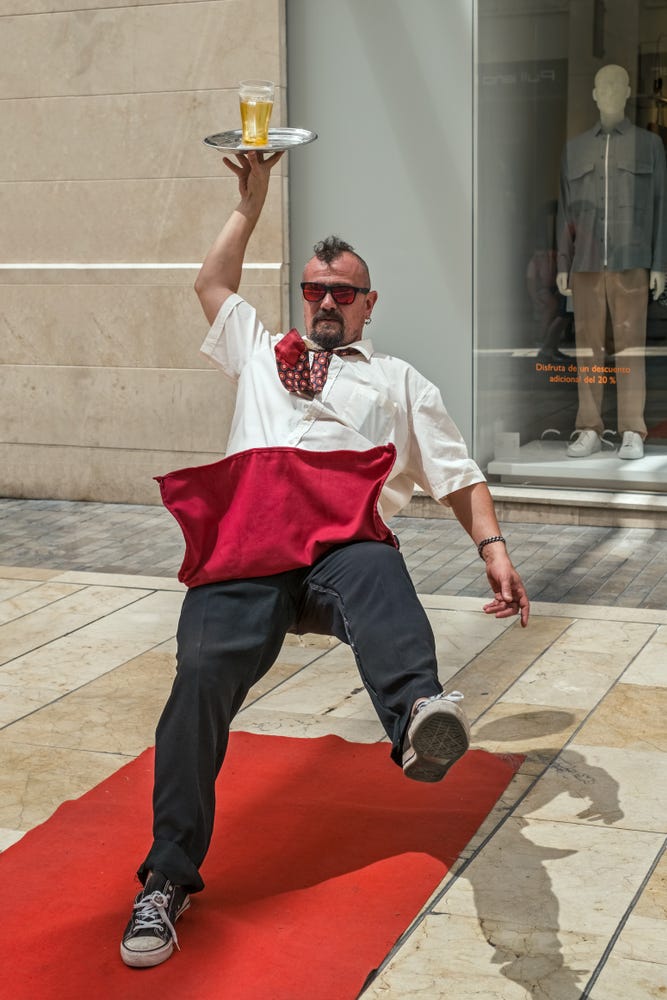#12 Are you a bit wobbly?
If you suffer from ankle, knee, hip or lower back pain have you ever been assessed to see how stable you are?
If you haven’t tested your stability recently I suggest you do as it is a key indicator of joint issues and how well you are ageing.
Your ability to be stable and maintain balance enables your body to operate in the most efficient and aligned way, which both maximises performance and avoids repetitive use injury.
If you are doing any physical activity, stability of your lower body is essential, but unfortunately as you age you will experience involuntary loss of muscle mass, strength, and function, termed sarcopenia. Muscle mass decreases approximately 3–8% per decade after the age of 30 and this rate of decline is even higher after the age of 60. This means the muscles that provide stability, get weaker over time. Which means you have to do more work on stability as you age to maintain the capability to be active and optimise your longevity.
How do you assess your lower body stability?
It’s a four step process you can do everyday. You do these tests without wearing footwear.
With eyes open stand and lift one leg off the ground and hold for 10 seconds. Repeat for the other leg.
If you can do that, with your eyes open stand and lift your leg so your thigh is 90 degrees to your body for 10 seconds. Repeat for the other leg.
If you can do that, close your eyes stand and lift one leg off the ground and hold for 10 seconds. Repeat for the other leg.
If you can do that, close your eyes stand and lift your leg so your thigh is 90 degrees to your body for 10 seconds. Repeat for the other leg.
If by step 4 you can get to 10 seconds with eyes shut you have got sound lower body stability.
This is a good test because when we move we are constantly on one leg so all the instability is passing through your body, many thousands of time a day that causes damage to your joints.
I find the worse a client is at this test the more they report lower body and back joint pain.
You can see examples of the step 3 and 4 tests with my clients in this video.
You may think the second client is exaggerating but they are not. For the first 3 weeks it was the same performance. They report knee injury and pain which isn’t surprising as the hip instability force is being passed straight to the knees.
How do you improve stability?
You can improve stability quickly doing two things:
Everyday stand on one leg while doing tasks. The easiest one is do it while brushing your teeth. This will train the central nervous system and your muscles to maintain balance.
Include in any exercise session you do, stability building exercises. Your check list of muscles to focus on are:
Tibialis muscles, which are at the front of your shins. They control ankle movement.
Hamstring muscles at the back of your upper leg which control bending of your knee.
Hip and glute muscles which control the movement of your hip in all directions.
Your oblique muscles (side muscles around your waist) which control sideways movement of your core.
Transversus abdominis (your six pack) and spinal erector muscles that run along your spine which control core movement forward and backwards.
Ironically all these muscles get underused in our sedentary working lives so need extra focus anyway plus work to offset the sarcopenia ageing process.
All these muscles can be trained without equipment. If you wanted to hit them all in one go, a circuit could look like this:
Wall supported toe raises (Tibialis muscle) maximum number till you can’t do any more.
Plank for 30 seconds (Transversus abdominis and spinal erector muscles)
Wall sit for 30 seconds (Hamstring, glutes and hip muscles)
Plank 30 seconds
Wall sit 30 seconds
Side plank each side 20 seconds (Oblique muscles)
Side lying single leg raises 30 second each side (Glute muscles)
Glute bridge hold for 20 seconds (Glute, hip, transversus abdominis and spinal erector muscles)
Side plank each side 20 seconds
Glute bridge hold for 20 seconds
Squat hover over chair for 30 seconds (Hamstring and glute muscles)
Bird dog 6 reps each side (Everything)
Alternatively go to a Yoga or Pilates class as both focus on stability as a key outcome.
Avoid being wobbly and you will reduce pain in your joints, but you do need to work at it, especially as you age.
If you would like to learn more about our practice visit our website Click here. We offer a range of services both face to face and virtual to help anyone around the world perform, feel and look better as they age.
Contact me on the email address below to set up a free no obligations consultation on how we can help you meet your longevity goals.





